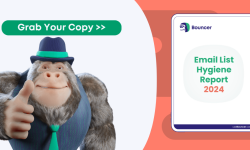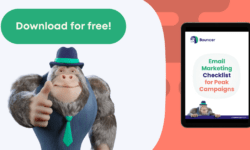While ZoomInfo offers many features for B2B companies, it has its flaws too.
Many users question whether it’s worth the cost, from outdated contact details to expensive contracts that don’t always pay off.
In this guide, we’ll explain what ZoomInfo does well, where it falls short, and how to make the most of its features.
Plus, we’ll introduce you to a more innovative way to verify email contacts so you don’t waste time reaching out to dead-end leads.
What is ZoomInfo?
ZoomInfo is a sales intelligence platform that helps businesses find, reach, and engage with potential customers.
💡 Example: instead of searching LinkedIn for hours to find the right person to contact, ZoomInfo gives you a list of verified business emails and phone numbers in minutes.
🔹 Quick action: if you want to reach more potential customers, consider using ZoomInfo to get high-quality contact data for your outreach.
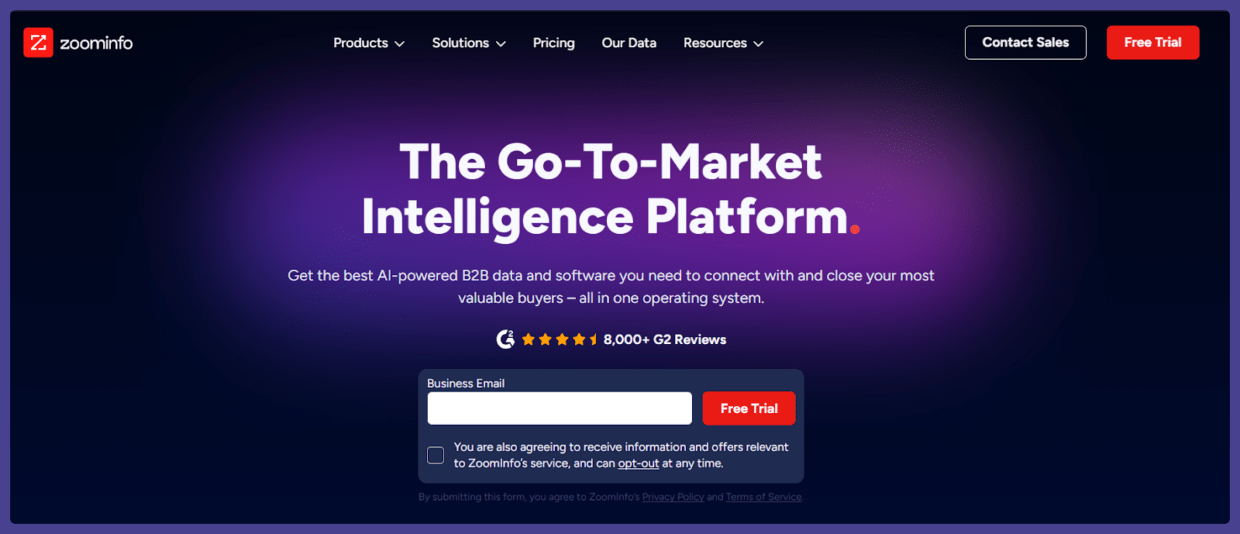
ZoomInfo’s top features
If you want to improve your email outreach, ZoomInfo offers a handful of features to help you connect with the right people. Here are the top five:
#1 Verified business emails
Get accurate, up-to-date email addresses for decision-makers.
🔹 What to do:
- Use filters to find verified emails based on industry, job title, or company size.
- Check the email verification score to ensure contacts are active.
✅ Example: ZoomInfo provides verified emails instead of sending emails to outdated addresses, reducing bounce rates.
#2 Email automation with ZoomInfo Engage
Send personalized emails at scale without manual work.
🔹 What to do:
- Set up email sequences to automatically follow up with leads.
- Use pre-built templates for different types of outreach.
✅ Example: A sales rep can schedule three follow-up emails in advance instead of remembering to send them manually.
#3 Intent-based email targeting
Reach out to leads when they’re actively looking for your product.
🔹 What to do:
- Use Buyer Intent Data to see which companies are researching your industry.
- Prioritize leads who are engaging with similar products.
✅ Example: if a company searches for “email marketing software,” you can email them before your competitors do.
#4 CRM email enrichment
Fill in the missing email addresses for your existing leads.
🔹 What to do:
- Upload your CRM database to ZoomInfo.
- Automatically add missing emails and update outdated contacts.
✅ Example: if you have a list of potential customers but don’t have their emails, ZoomInfo finds and fills in the gaps.
#5 Email deliverability insights
Analyze and improve email performance with real-time insights.
🔹 What to do:
- Track email open rates and engagement to see which messages work.
- Adjust subject lines and content based on performance data.
✅ Example: if your emails have low open rates, ZoomInfo shows you which leads engage the most so you can refine your approach.
How to use ZoomInfo in four simple steps
Step 1: Find the right people to contact
ZoomInfo’s database includes millions of business contacts, so you can find decision-makers in your target industry.
🔹 What to do:
- Use filters like industry, job title, company size, and location.
- Search for specific companies or roles to get direct contact details.
✅ Example: if you’re selling marketing software, you can filter for “Marketing Directors” at mid-sized companies in the U.S.
Step 2: Get verified contact information
ZoomInfo provides business emails, phone numbers, and company details so you can reach prospects directly.
🔹 What to do:
- Check the email verification score to ensure the contact is still active.
- Use phone numbers to reach decision-makers faster.
✅ Example: ZoomInfo gives you verified details instead of guessing an email address.
Step 3: Automate your outreach
ZoomInfo helps sales and marketing teams send emails, make calls, and run ad campaigns without manual work.
🔹 What to do:
- Use ZoomInfo Engage to send automated emails to leads.
- Set up call lists for your sales team.
- Run targeted ads based on buyer intent signals.
✅ Example: A sales team can use ZoomInfo to send 100 emails per day instead of typing them manually.
Step 4: Track buyer interest with intent data
ZoomInfo can tell you when a company is actively searching for your product type, so you can reach out at the right time.
🔹 What to do:
- Check for companies researching topics related to your business.
- Prioritize high-intent leads who are ready to buy.
✅ Example: if a company has searched for “CRM software” multiple times, they’re likely looking for a solution.
ZoomInfo cost
ZoomInfo does not publicly list its pricing, as costs vary based on features, number of users, and contract terms.
Users typically report that annual plans start at around $6,000 per user, with higher-tier packages costing much more.
The platform offers different pricing for Sales, Marketing, and Talent solutions, but all plans require annual commitments – monthly payments are not an option.
You must request a custom quote based on your needs to get exact pricing.
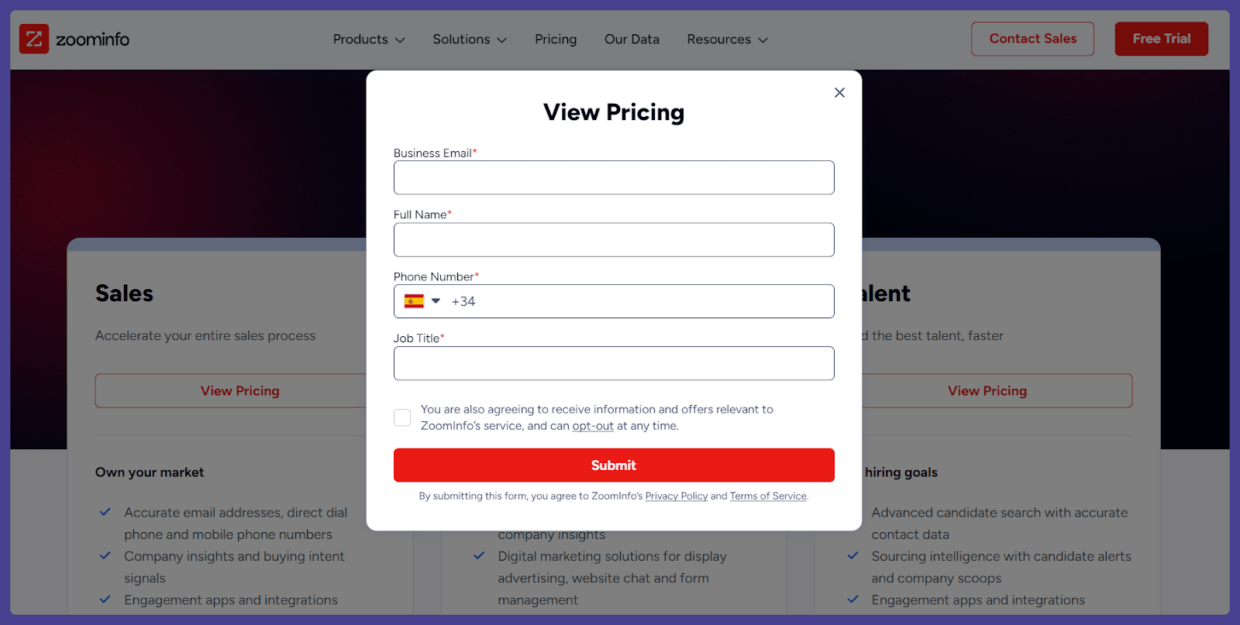
ZoomInfo – who is it for?
ZoomInfo is built for businesses that rely on accurate B2B contact data to:
- drive sales and marketing strategies,
- recruit top talent,
- or gain market trends insights.
Below are the five types of professionals who benefit most from ZoomInfo:
#1 Sales teams looking for leads
Sales professionals use ZoomInfo to find and engage decision-makers, improving their sales and marketing efforts and driving revenue growth.
🔹 Why it’s useful:
- Access verified business emails and phone numbers.
- Filter leads by industry, job title, company size, and location.
- Automate outreach and follow-ups with ZoomInfo Engage.
✅ Example: a software sales rep targeting IT managers at healthcare companies can instantly pull up direct contact details and accelerate the sales process.
#2 Marketing teams running B2B campaigns
Marketing teams leverage ZoomInfo’s extensive data coverage and buyer intent insights to fine-tune their sales and marketing strategies.
🔹 Why it’s useful:
- Identify companies actively searching for your type of product.
- Run highly targeted ads based on actual buyer intent signals.
- Capture more leads with pre-filled forms and enriched contact data.
✅ Example: a B2B marketing team can run LinkedIn ads targeting CFOs at growing tech startups when they’re actively researching financial tools.
#3 Recruiters and hiring managers
Recruiters and HR professionals use ZoomInfo to streamline talent acquisition and make applicant tracking systems more efficient.
🔹 Why it’s useful:
- Get contact details for passive job seekers.
- Search for candidates with specific skills and experience.
- Build a pipeline of potential hires before jobs are posted.
✅ Example: a recruiter looking for senior software engineers in Austin can instantly generate a list of qualified candidates.
#4 Business development & partnerships
Companies looking to expand, form partnerships, or analyze competitors use ZoomInfo for market trends and growth signals.
🔹 Why it’s useful:
- Research potential business partners and suppliers.
- Identify new market opportunities with company growth data.
- Monitor competitor hiring trends, funding updates, and expansions.
✅ Example: a startup looking to partner with logistics companies can find firms recently expanding their fleet.
#5 Operations & data teams managing B2B data
Operations teams use ZoomInfo to refine data collection practices and maintain accurate CRM records.
🔹 Why it’s useful:
- Automatically update outdated contact details.
- Integrate real-time B2B data with sales and marketing tools.
- Eliminate duplicate or incorrect records in CRMs.
✅ Example: a company using Salesforce can sync ZoomInfo to keep all contact data accurate without manual work.
ZoomInfo – what does it lack?
While ZoomInfo is a well-known B2B data provider, many users report significant issues with its accuracy, pricing, and overall service.
Based on Trustpilot reviews, here are the top five shortcomings of ZoomInfo.
#1 Inaccurate contact data
Many users complain that ZoomInfo’s outdated database contains incorrect information, leading to wasted time and effort.
💬 Review: “What a garbage website. I hope they don’t charge for fake info. They have me marked as a logistics manager when I am a purchasing clerk. And all other contacts have either left the company or retired more than 10 years ago.” — Richard Foss, CA

👎 Problem: businesses rely on accurate data for outreach. If the contact information is wrong, sales teams waste resources on dead leads.
#2 Expensive contracts with no ROI
ZoomInfo’s pricing is high; many users report that the service does not generate results.
💬 Review: “We paid almost $6,000 for one user for one year, which did not yield a single sale! They auto-renew without notification, and if you are late by a day, notifying them 60 days in advance for non-renewal, they pressure and threaten you to renew for another year.” — Joe A., US

👎 Problem: even with a significant investment, customers report getting little to no return, making the high cost unjustifiable.
#3 Poor customer support
Several users have shared experiences of ZoomInfo’s lackluster support, describing long wait times and unhelpful responses.

💬 Review: “Customer service so bad it borders on fraud. Every time you ask for records from their database team, they drag their feet for weeks and weeks and weeks. Then at the end of 12 months, when you haven’t been able to acquire the number of records you purchased, the contract period is up and you are SOL.” — Sean, US
👎 Problem: businesses expect fast and effective support when they encounter issues. Instead, ZoomInfo’s slow response times lead to frustration and financial losses.
#4 Aggressive sales and auto-renewal practices
Many reviewers report feeling pressured into renewing their contracts, sometimes against their will.
💬 Review: “They don’t care about their customer service or customer satisfaction. They only care about locking you into a massive contract and securing their money.” — Shai Hatuel, US

👎 Problem: ZoomInfo’s renewal policies seem designed to trap users in long-term contracts without an easy exit.
#5 Intrusive and misleading data collection
Users express concerns over how ZoomInfo collects and processes personal data without consent.
💬 Review: “I never gave consent, nor have I been notified that my data has been processed. I never agreed to have my information collected, processed, or sold. I feel that my personal space is violated, should it be professionally orientated or not.” — Ivo Iosifov, BG

👎 Problem: businesses and individuals are increasingly wary of data privacy violations, making ZoomInfo’s approach a potential risk.
ZoomInfo’s email accuracy
ZoomInfo is an excellent tool for finding business contacts, but it has one major challenge – email accuracy.
Corporate email addresses change frequently due to job transitions, company reorganizations, and employee turnover.
If your contact data isn’t verified, your outreach efforts can become ineffective.
Why ZoomInfo’s email verification falls short
ZoomInfo integrates with NeverBounce for email verification, but it has limitations:
- Outdated emails still make it through the system.
- Catch-all addresses remain unverified, meaning you might send emails that never reach an actual inbox.
- Strict filtering (99+ verification threshold) drastically reduces your contact list, limiting your reach.
This leaves businesses in a difficult position – either sacrificing database size to prioritize accuracy or risking high bounce rates by relying on ZoomInfo’s built-in verification.
How Bouncer solves the problem
Instead of relying solely on ZoomInfo’s email scoring system, companies can use Bouncer to re-verify emails independently. Here’s how it works:
👉 Step 1: Extract a broader set of contacts from ZoomInfo by using a lower threshold (80+ instead of 99+).
👉 Step 2: Upload the email list to Bouncer for a second layer of verification.
👉 Step 3: Bouncer checks each email, including catch-all addresses, to confirm deliverability.
👉 Step 4: Businesses can confidently send emails, knowing their list is as accurate as possible.
✅ Real-world benefit: instead of cutting your contact list in half by over-filtering, you get more verified contacts while ensuring high deliverability.
Why use Bouncer with ZoomInfo?
✔ More verified emails – go beyond ZoomInfo’s built-in verification to check catch-all addresses and avoid outdated emails.
✔ Higher reach, same accuracy – keep a larger contact list without sacrificing deliverability.
✔ Better email performance – reduce bounces, spam complaints, and wasted outreach efforts.
🔹 Quick action: if you’re using ZoomInfo for lead generation, run your email lists through Bouncer before sending. It’s a simple way to maximize results and avoid deliverability issues.
Thanks to combining ZoomInfo’s data with Bouncer’s advanced email verification, businesses can ensure their outreach campaigns are effective and scalable.
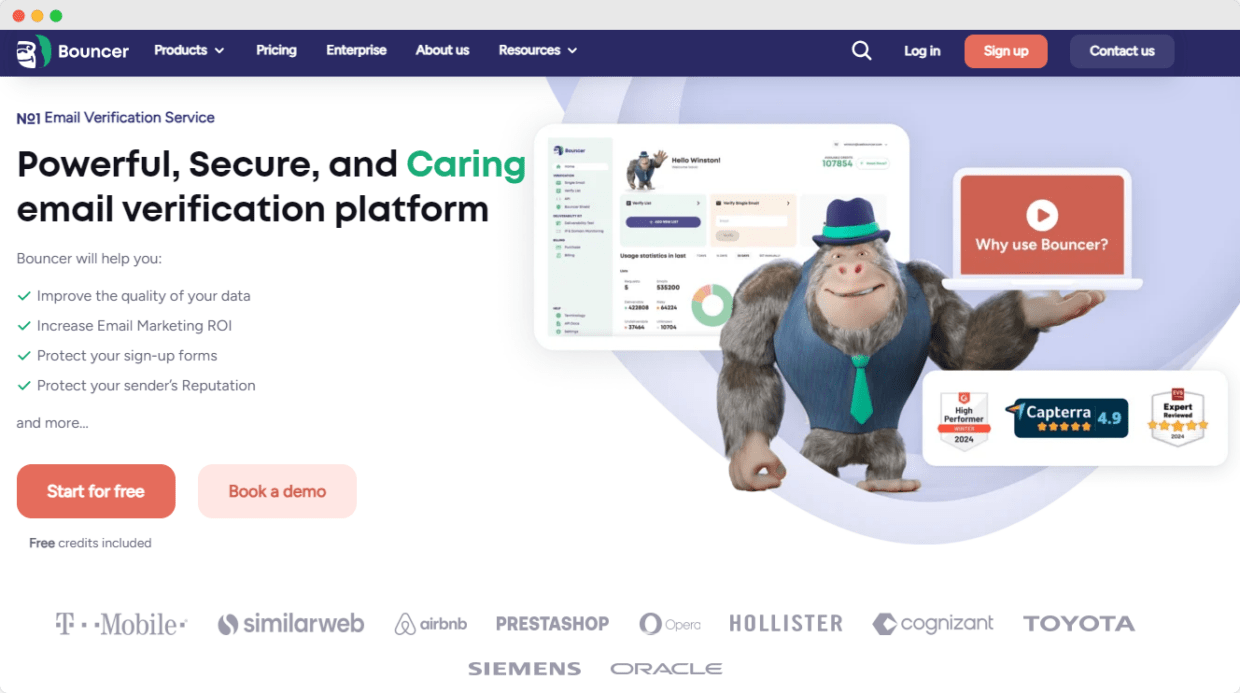
Conclusion
ZoomInfo is a powerful tool, but it’s not perfect.
If you are one of those sales and marketing professionals who rely on ZoomInfo’s built-in verification, you could be wasting time and money on outdated contacts.
That’s where Bouncer comes in.
🚀 Don’t let bad data hold you back. Run your ZoomInfo leads through Bouncer (with 100 free credits) today and turn your email outreach into closed sales opportunities.
